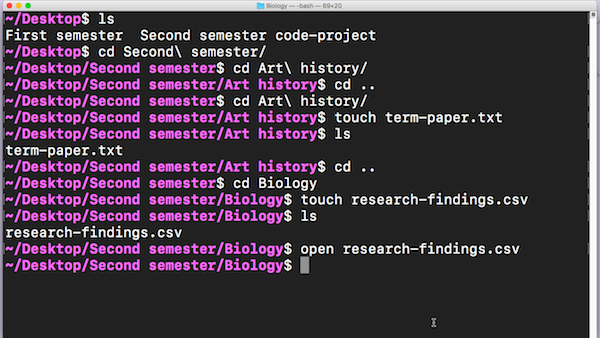
Given those separators, the wanted data is available in fields 3 and 4 on each line.Īfter the data in the question was edited to remove some spaces between the last two columns, the following will also do the job: cut -d ']' -f 3 file.txtĪlternatively just sed 's/.*]//' file. Here, we use ] or spaces or tabs as field separators (multiples of these may separate two column, which is why we use * after the ). it compresses multiple consecutive spaces into single spaces. The second expression is applied across the whole line and has the same effect as tr -s ' ', i.e. a space followed by zero or more spaces, and replaces these with a single space. This sed first does s/.*]// which deletes everything up to the ] (inclusive). With the given input data, this produces the same output as the first pipeline. The tee command prints the input it receives to the screen and saves it to a file at the same time.The sed removes everything on the line up to (and including) the final ], and the tr compresses multiple consecutive spaces into single spaces.Īlternatively, using only sed: sed -e 's/.*]//' -e 's/ */ /g' file.txt You might not like redirecting output with the > or > operators, as you won’t see the output of the command in the terminal. Option Two: Print Output Normally and Redirect It to a File

You can repeat this process as many times as you like to keep appending output to the end of the file. When you view the contents of the file, you’ll see the results of your second command were appended to the end of the file: Boldface text was typed by the user, and non-boldface text was printed by the command-line shell. In the below example transcript, is the prompt at which the user types commands. Otherwise, bash will leave the existing contents of the file alone and append the output to the end of the file. python program.py - run the Python program that is stored in the program.py file You can open a command-line shell by running the terminal program. Homebrew is the preferred package manager for macOS.

Shell in mac text file install#
Choose one of the following methods: Install using Homebrew.

If the file doesn’t already exist, bash will create the file. There are several ways to install PowerShell on macOS. For example, the following command will append system information to the file you specify: uname -a > /path/to/file If you do not want to save the complete text of the console, then just select the text you want to save and press Command + S or go to Menu > Shell > Export Selected text as.
Shell in mac text file mac os#
If you want to save the output of multiple commands to a single file, you’d use the > operator instead. You can achieve the same by going to the Terminal menu > Shell > Export text as. Shell Script editor for macOS / Mac OS X, Windows, and Linux features such as syntax highlighting, the Shell Script code builder, the Shell Script code assistant, and the Shell Script function list. zshrc file, you can colorize the Terminal. Also read: 4 of the Best Alternatives for the macOS Terminal App. To turn off the startup command, simply uncheck the Run command box. Remember, the > operator replaces the existing contents of the file with the output of the command. This setting will auto-save to the associated profile and run the next time you open a shell with that profile. For example, the cat command prints the contents of a file to the terminal: cat /path/to/file If you view the contents of the file, you’ll see the ls command’s output. Run shell command: echo This is a test > data.txt. Add data and press CTRL + D to save the filename.txt when using cat on Linux.
/how-to-save-terminal-commands-on-a-mac-51877871-904e2096e704422ab3fd353574322dc9.jpg)
Make a text file on Linux: cat > filename.txt. Specify any valid path and bash will create a file at that location. Create an empty text file named foo.txt: touch foo.bar. You don’t have to specify the path to an existing file.


 0 kommentar(er)
0 kommentar(er)
